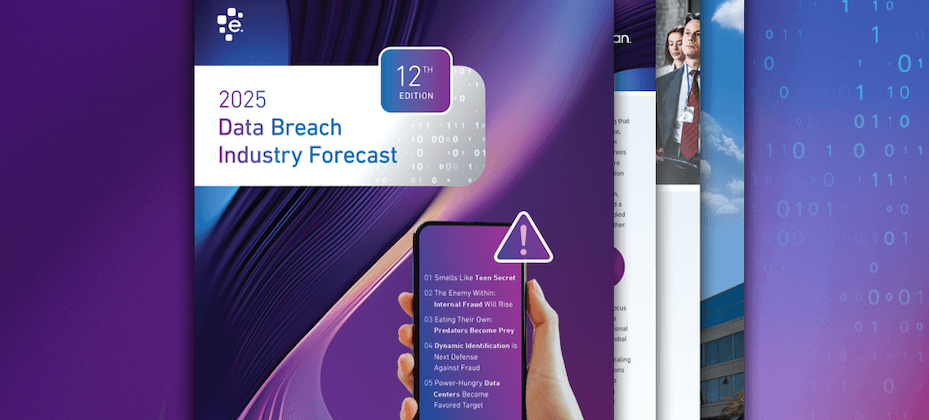
Alternative data opens up doors to financial access for consumers – and Experian has been at the forefront of collecting, using and advocating for the use of alternative data for many years. This topic was explored and analyzed by the Consumer Financial Protection Bureau (CFPB) in a hearing today in Charleston, West Virginia. Experian is a big advocate for full-file reporting, which means that we support the widespread reporting of alternative data—including, rental payments, utility payments and cellular telephone payments to name a few. For a large segment of the population, the reporting of these types of payments could provide opportunities to establish and/or build a credit file. We believe consumer behavior has evolved and technology has advanced in a way that will soon enable Experian to facilitate lending to this population that we still call credit invisible. We are actively working to make these people visible, and to help them get access to responsible lending. For this reason, Experian supports enactment of the Credit Access and Inclusion Act (H.R. 435), which would allow consumers to benefit from the inclusion of alternative data into credit files. Consumers are at the heart of everything we do and this is why we chose to sponsor a two-year grant with the Credit Builders Alliance (CBA). This grant will enable us to work with affordable housing providers and public housing authorities to aid them in reporting rent payments to the credit bureaus in order to provide their low and moderate income residents with a valuable credit build opportunity. The project is ongoing and we are hopeful that this will help and empower many consumers and that this model of rental data reporting will continue to flourish in the future. Experian has conducted several studies looking at how the inclusion of alternative data could improve the lives of many Americans: After Experian began incorporating on-time rental payments to credit files through Experian RentBureau in 2011, we released an analysis in July 2014 that revealed the inclusion of on-time rental payments to credit files helps unbanked consumers integrate into the mainstream banking system. We also conducted a study on the impact of alternative reporting on-time utility payments in credit reports. Experian found that including these figures in credit reports would cause a 15 percent increase in those considered prime, which means those that pose little risk to lenders, as well as a 50 percent drop in the number of consumers considered to have a poor (sub-prime) credit history. In addition to these studies, other third parties have made similar findings. One study by the Policy and Economic Research Council (PERC) and the Brookings Institution, found that when energy and utility companies report both positive and negative data, those without a credit history dropped to 5 million. Experian has demonstrated that incorporating new data sources into credit files is a positive step for consumers because it moves them from being unscorable to scorable, and we believe CFPB’s continued attention on this important initiative could help millions of Americans finally obtain the loans and credit that were previously out of reach. By building a comprehensive picture of data points, this can immeasurably help underserved populations, including young adults, minorities and immigrants, access newfound opportunities. Credit bureaus like Experian can then use this data for good by building profiles of these consumers, many of whom would be able to then obtain credit for the first time. It ultimately unlocks greater potential for our economy.

Working in partnership with British charity, the National Literacy Trust, Experian has helped to analyze literacy levels across England. The study reveals that 86% of English parliamentary constituencies contain at least one area with serious literacy issues. By using our socio-demographic classification system, Mosaic, and harnessing The National Literacy Trust’s expertise, we have been able to create a literacy vulnerability score to measure the reading abilities of each region. The data illustrates the need to move away from nation-wide strategies to tackle literacy problems and move to more targeted local solutions. Although there are clear hot spots, the report found that literacy vulnerability is not restricted to regions with low income or social deprivation. The National Literacy Trust has shared the report with British Members of Parliament with an aim to help them better understand and respond to the specific literacy challenges in their constituency. Key highlights from the report: The constituency with the greatest literacy problems is Middlesbrough, closely followed by Barking in London Literacy issues are intensely localised Inner cities and their surrounding areas dominate the list of locations with a need for the greatest literacy support Continue to read more details from the report.

During the National Football League’s biggest weekend, it’s often the commercials that take center stage. It’s every advertiser’s dream. The world as your audience. But how do advertisers capitalize on the opportunity and connect with viewers? Advertisers are responsible for developing memorable content and messages that resonate with their audiences. This year, we saw our fair share of light-hearted commercials and those that tugged at our emotional heart strings. And most of them were discussed the next morning at the water cooler. So who did this year’s commercials resonate with? Based on 10 of the more talked about commercials during this year’s Super Bowl, we categorized them into two segments: emotional and light-hearted. We leveraged our Social Media Analysis to dig a bit deeper into the core demographics and social behaviors of the consumers who engaged with these brands. Interestingly, nearly three times the number of social media users engaged with brands associated with emotional commercials rather than the brands tied to more humorous TV spots. The emotional heart strings (Airbnb, Audi, Budweiser, Coke and Lumber 84) Our analysis revealed more than 52 percent of the consumers who interacted with these brands on social media were women, and nearly 28 percent fell between the ages of 26 and 35. Moreover, these consumers were 15 percent more likely to be single than the average social media user. They were also 1.91 times more likely to reside in Wahington D.C. The analysis also showed consumers who engaged with these brands were 2.69 times more likely to fall within the life stage Experian refers to as “Urban Edge” based on the company’s Mosaic® lifestyle segmentation system. People in this segment tend to be younger, up-and-coming singles, who live big city life styles near the top metropolitan markets. The types of social media handles these consumers were more likely to follow, included sports organizations, soccer teams and leagues, and magazine brands. Additionally, the hashtag these consumers were more likely to talk about than the average social media user was #travel, while they were more likely to mention @nytimes in social media posts. Commercials with a funny bone (Bai, Buick, Kia, Mr. Clean and T-Mobile) While there were some similarities in the core demographics of both segments of social media users, there were some slight variations. More than 54 percent of social media users who engaged with the brands tied to the light-hearted commercials were men. These consumers were also 26 percent more likely to be single than the average social media user, and 1.55 times more likely to reside in Washington (state). Consumers who engaged with these brands were 1.74 times more likely to fall within the life stage “Heritage Heights.” These are often single people and families with modest incomes who live settled lives in urban apartments. The types of social media handles these consumers were more likely to follow, included NFL and football enthusiasts, WWE, and technology influencers. Furthermore, the hashtag these consumers were more likely to talk about was #sweepstakes, while they were more likely to mention @shawnmendes than the average social media user. Quite frankly, each consumer is different. What peaks their interests and motivates them is unique to every individual. It’s up to marketers to understand who their customers are, and how to engage them in an impactful and meaningful way. And social media data provides them with a remarkable view into their preferences and opinions. Through our data and insights, we’re able to help marketers tap into who their customers are and how they behave. Marketers can take this information and optimize content for future marketing campaigns and deliver messages that resonate with their target audiences. The Big Game is only once a year, but marketers should “game plan” year round. It’s those marketers who will come out on top. To learn more about how marketers can leverage social media data, visit https://www.experian.com/marketing-services/targeting/marketing-measurement/social-media-analysis.html


